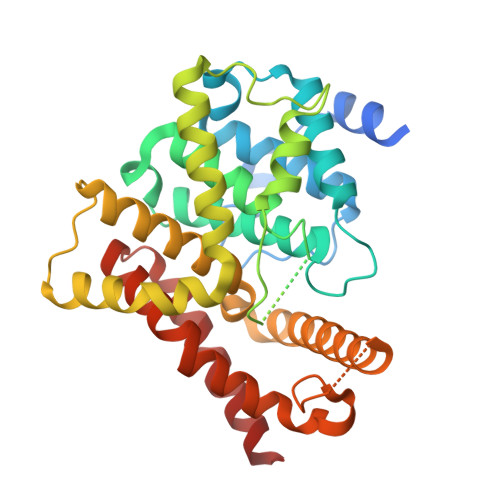Utilization of Halogen Bond in Lead Optimization: A Case Study of Rational Design of Potent Phosphodiesterase Type 5 (PDE5) Inhibitors.
Xu, Z., Liu, Z., Chen, T., Chen, T.T., Wang, Z., Tian, G., Shi, J., Wang, X., Lu, Y., Yan, X., Wang, G., Jiang, H., Chen, K., Wang, S., Xu, Y., Shen, J., Zhu, W.(2011) J Med Chem 54: 5607-5611
- PubMed: 21714539
- DOI: https://doi.org/10.1021/jm200644r
- Primary Citation of Related Structures:
3SHY, 3SHZ, 3SIE - PubMed Abstract:
For proof-of-concept of halogen bonding in drug design, a series of halogenated compounds were designed based on a lead structure as new inhibitors of phosphodiesterase type 5. Bioassay results revealed a good correlation between the measured bioactivity and the calculated halogen bond energy. Our X-ray crystal structures verified the existence of the predicted halogen bonds, demonstrating that the halogen bond is an applicable tool in drug design and should be routinely considered in lead optimization.
- State Key Laboratory of Drug Research, Shanghai Institute of Materia Medica, Chinese Academy of Sciences, Shanghai, China.
Organizational Affiliation:

















